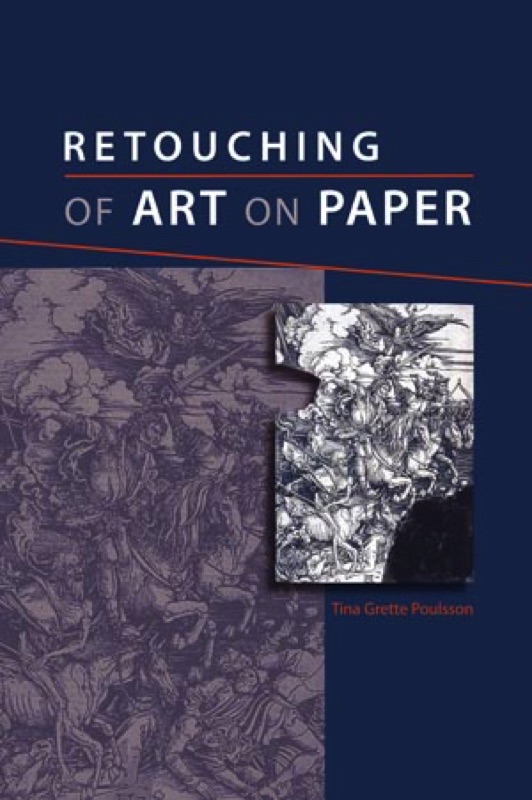Retouching, the process employed by paper conservators to replace damaged or lost areas of media, is carried out directly on the original item or on paper infills. Interventive retouching on an original surface requires the consideration of several important ethical issues such as reversibility and authenticity. The use of retouching on infills, which could be termed non-interventive, is easier to accept, as it can always be made reversible and can normally be easily identified as a later addition to the original work. The focus of this book is on interventive retouching and does not include methods of toning or other aspects belonging to infilling. However, the question of reconstruction, including digital reconstruction and facsimile reintegration, is discussed.
As artworks are intended to be seen, it can be argued that aesthetics are of paramount importance. Retouching may be used as a means to preserve the legibility and composition of the image for the viewer and as such it may be considered a necessary or unnecessary evil.
Foreword
Acknowledgements
Introduction
A subject of controversy
Definition of retouching
Restoration
Reconstruction
Terminology
' Loss compensation'
'Image reintegration'
'Inpainting'
'Retouching'
'Toning'
Other terms
Retouching of art on paper versus paintings
Retouching of art on paper versus archival material
History of retouching art on paper
The development of paper restoration and conservation
The influence of collection practice on restoration and retouching
The sixteenth-century collection
The seventeenth-century collection
The eighteenth-century collection
Restoration in the nineteenth century
The early restorers
Retouching by artists
Retouching by collectors
The domestic-restorer
The restorer's reputation
Advice on retouching in handbooks
Early references to paper restoration
Lucanus 1812
Welsch 1834
Bonnardot 1846
Schall 1863
Collectors' manuals and household handbooks
Gunn 1911
Beaufort 1926
Plenderleith 1937
Schweidler 1938
Newer trends
Works of art on paper and historical consciousness
Works of art on paper as artistic expressions
Appreciation of prints
Appreciation of drawings
Historical consciousness
Reactions to integrated retouching
Opposing directions and the development of modern conservation theory
Value of the artwork
Ethics of retouching
Arguments against retouching
The principle of reversibility
Falsification and false information
Conservation versus restoration
Manual skills
Other factors that may influence the conservator's choice
Retouching in museum and private practice
Justification for retouching
Legibility and aesthetics
Distracting damage
Documentation
Justification in codes of ethics
Problematic material
Archival material
Modern art
High value art
Sketches
Other cases
Retouching and reconstruction in practice
Ethical considerations
Aesthetics
Reconstruction/facsimile reintegration
The problem of reversibility when retouching on the primary support of the print or drawing
Isolating layers
Experiments with isolating layers
Removal of retouching
Alternative solutions
Colour and light
Colour
Surface
Metamerism
Lighting
Non-pigment-based retouching methods
Paper overlays
Pulp and fibre overlays
Cellulose powder
Paper extract
Burnt sugar solution
Marble dust
Facsimile reintegration and digital reconstruction
Pigment-based retouching
Media
Application
Binders and coatings
Retouching of drawings, pastels, watercolours and gouaches
Retouching of prints
Conclusion
List of materials and suppliers
Notes
Bibliography
Reviews
This book, one of very few published texts on paper conservation, is a study of a subject of great interest to paper conservators. It also presents a valuable resource on issues concerning curators of paper collections and conservators in other specialties. The author has done an admirable job of collecting sources on the subject...This book is an important addition to [paper conservation] literature.
Journal of the Canadian Association for Conservation of Cultural Property 35 (2010) 63-64
